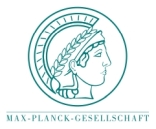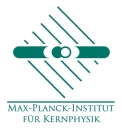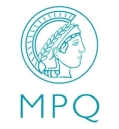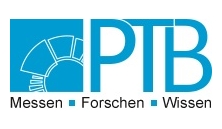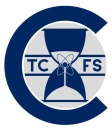Max Planck-RIKEN-PTB Center for
Time, Constants and Fundamental SymmetriesPartner Institutes
Max Planck Institute for Nuclear Physics
The Max Planck Institute for Nuclear Physics ![]() (MPIK) was founded as one of the todays 82 Max-Planck-Institutes of the Max-Planck-Society in 1958
under the leadership of Wolfgang Gentner. Building on very special existing expertise and
making optimal use of MPIK key technologies and infrastructure, it was proposed in 2000 to
concentrate future research onto two interdisciplinary fields with high scientific potential:
(MPIK) was founded as one of the todays 82 Max-Planck-Institutes of the Max-Planck-Society in 1958
under the leadership of Wolfgang Gentner. Building on very special existing expertise and
making optimal use of MPIK key technologies and infrastructure, it was proposed in 2000 to
concentrate future research onto two interdisciplinary fields with high scientific potential:
- Many-Body Dynamics of Atoms and Molecules (Quantum Dynamics), including precision measurements of fundamental particle properties within the Divisions of Blaum, Keitel, Pfeifer and
- Crossroads of Particle Physics and Astrophysics (Astroparticle Physics) within the Divisions of Hinton/Hofmann and Lindner.
In both research areas the MPIK belongs to the top world-leading institutes, as recently pointed out by the members of the Scientific Advisory Board. In addition to the five scientific divisions the institute hosts two Max-Planck-Fellows (Schwenk and Smirnov) and several Independent Young Investigator Groups. Furthermore the institute has established three International Max-Planck-Research Schools with a strong link to nearby Institutes and the University of Heidelberg. About 40% of the doctoral students at MPIK are from abroad, partly linked via the four Max-Planck Partner Groups with India and Turkey.
The division of Klaus Blaum on
"Physics with Stored and Cooled Ions" ![]() pursues three major
research fields:
pursues three major
research fields:
- High-precision experiments with stored and cooled ions;
- Atomic, molecular and cluster quantum dynamics with stored particles;
- Development of experimental techniques for physics with stored ions,
with outstanding results in the areas of the proposed Center topics.
The division of Thomas Pfeifer on
"Quantum Dynamics and Control" ![]() works on the following
research thrusts and their intersections:
works on the following
research thrusts and their intersections:
- Fundamental interactions and physics tests;
- Time-resolved few-body quantum dynamics;
- Interactions in cold and controlled targets,
with first experimental successes on building bridges from time-domain quantum control to precision spectroscopy from the optical to the X-ray (for high-energy nuclear transitions) regime.
Max Planck Institute of Quantum Optics
The Max Planck Institute of Quantum Optics ![]() (MPQ) started out in 1976 as a Laser Research
Group within the Max Planck Institute of Plasma Physics working on the development of
high-power lasers and their application in fusion research. In 1981 the research group
achieved the status of a separate Max Planck Institute and moved to its own building on the
same campus.
(MPQ) started out in 1976 as a Laser Research
Group within the Max Planck Institute of Plasma Physics working on the development of
high-power lasers and their application in fusion research. In 1981 the research group
achieved the status of a separate Max Planck Institute and moved to its own building on the
same campus.
Research at MPQ concentrates on the interaction of light and matter under
extreme conditions. One focus is high-precision spectroscopy of hydrogen and hydrogen-like
systems. In the course of these measurements
Theodor Hänsch developed the frequency comb
technique for which he was awarded the Nobel Prize for Physics in 2005. Within this
division ![]() Thomas Udem is heading the Ion Trap, XUV Frequency Comb and
Hydrogen Spectroscopy projects
Thomas Udem is heading the Ion Trap, XUV Frequency Comb and
Hydrogen Spectroscopy projects ![]() .
.
The division of Quantum Dynamics headed by Gerhard Rempe is working on the controlled capture of individual photons and atoms and their interaction with one another. Controlled single photon sources and the foundations of quantum computation is one of the drivers of their research.
The theory division on the other hand is working on strategies to communicate quantum information and to develop algorithms that allow safe encryption. Experimentally this field is investigated by Harald Weinfurter and coworkers.
The Quantum Many Body Systems division of Immanuel Bloch is investigating the
bizarre properties of quantum matter at extremely low temperatures.
Finally the shortest
light flashes with durations of only several attoseconds are generated and applied for
research within the Attosecond division of Ferenc Krausz.
Physikalisch-Technische Bundesanstalt
The Physikalisch-Technische Bundesanstalt ![]() (PTB, in Braunschweig and Berlin) is the National
Metrology Institute of Germany, with scientific and technical tasks. Research in metrology
for measurements with the highest accuracy and reliability are its core competence.
Activities in the field of Time and Frequency comprise some of PTB's most widely used
services for the general public as well as one of the most active fields of metrological
research.
(PTB, in Braunschweig and Berlin) is the National
Metrology Institute of Germany, with scientific and technical tasks. Research in metrology
for measurements with the highest accuracy and reliability are its core competence.
Activities in the field of Time and Frequency comprise some of PTB's most widely used
services for the general public as well as one of the most active fields of metrological
research.
PTB is a major contributor to international atomic time scales TAI and UTC with its
primary caesium clocks and in the role of the pivot laboratory for worldwide time transfer.
The development of optical clocks based on laser cooled and trapped atoms and ions, of
stable lasers and cryogenic optical reference resonators, and of fiber-based optical
frequency transfer is pursued in the departments
Time and Frequency ![]() (Ekkehard Peik), Length and
Quantum Optics (Harald Schnatz) and in the
QUEST Institute
(Ekkehard Peik), Length and
Quantum Optics (Harald Schnatz) and in the
QUEST Institute ![]() of PTB and Leibniz-University,
Hannover, founded as an outcome of the excellence initiative in the year 2006 and led by
Piet O. Schmidt.
of PTB and Leibniz-University,
Hannover, founded as an outcome of the excellence initiative in the year 2006 and led by
Piet O. Schmidt.
The variety of different optical clocks that are developed at PTB Braunschweig allows for comparisons that are crucial for the understanding of subtle systematic effects in the uncertainties of the clocks, and opens the possibility for sensitive tests of fundamental physics, where possible effects of new physics would appear with different signatures in different atomic and nuclear systems.
RIKEN
RIKEN ![]() was founded in 1913 following a proposal of Jokichi Takamine, and is nowadays
recognized as the flagship research institution of Japan. RIKEN developed since then to a
union of institutions covering physics, chemistry and life science research. RIKEN hosts the
world's most powerful synchrotron radiation source (SPRING8), the well-known Nishina
center for accelerator based science, and with RSCC one of the world's fastest super
computers.
was founded in 1913 following a proposal of Jokichi Takamine, and is nowadays
recognized as the flagship research institution of Japan. RIKEN developed since then to a
union of institutions covering physics, chemistry and life science research. RIKEN hosts the
world's most powerful synchrotron radiation source (SPRING8), the well-known Nishina
center for accelerator based science, and with RSCC one of the world's fastest super
computers.
The institution is involved in a variety of international collaborations including
involvement in a Max-Planck-RIKEN Joint Center for Systems Chemical Biology, in the
Rutherford Appleton's Muon Physics Program, CERN's antimatter physics program, and an
international physics program for the re-definition of the second, based on novel optical
standards, which were partly invented and developed at RIKEN.
The groups of Hidetoshi Katori
and Stefan Ulmer
are part of RIKEN's low energy, ultra-high precision fundamental physics program.
The Katori group (Quantum Metrology Laboratory) ![]() invented the optical lattice clock and
demonstrated frequency comparison of two optical clocks at the uncertainty level of 10-18.
Armed with these powerful tools, the group investigates testing fundamental physics such as
the constancy of fundamental constants, their coupling to gravity, as well as applications of
such clocks to relativistic geodesy. In parallel, the group explores quantum information
technology and quantum metrology using optical lattice clocks as platforms to investigate
quantum feedback schemes and quantum computation.
invented the optical lattice clock and
demonstrated frequency comparison of two optical clocks at the uncertainty level of 10-18.
Armed with these powerful tools, the group investigates testing fundamental physics such as
the constancy of fundamental constants, their coupling to gravity, as well as applications of
such clocks to relativistic geodesy. In parallel, the group explores quantum information
technology and quantum metrology using optical lattice clocks as platforms to investigate
quantum feedback schemes and quantum computation.
The Ulmer group (Fundamental Symmetries Laboratory) ![]() ,
is leading the BASE collaboration at
CERN, Geneva, Switzerland, which is performing ultra-precise measurements of the
fundamental properties of antiprotons using advanced Penning-trap methods. The group
invented several novel Penning-trap techniques, such as a reservoir trap for antiprotons, a
novel two particle spectroscopy technique for efficient high-statistics magnetic moment
measurements and performed several world record tests of the fundamental Charge-Parity-Time
(CPT) invariance. The FSL-group together with MPIK reported recently on a 350-fold
improved measurement of the antiproton magnetic moment at a precision of 1.5 parts in a
billion, a measurement of the proton magnetic moment with an uncertainty of 0.3 parts in a
billion, as well as the most precise comparisons of the proton-to-antiproton charge-to-mass
ratios with a fractional precision of 69 parts in a trillion.
,
is leading the BASE collaboration at
CERN, Geneva, Switzerland, which is performing ultra-precise measurements of the
fundamental properties of antiprotons using advanced Penning-trap methods. The group
invented several novel Penning-trap techniques, such as a reservoir trap for antiprotons, a
novel two particle spectroscopy technique for efficient high-statistics magnetic moment
measurements and performed several world record tests of the fundamental Charge-Parity-Time
(CPT) invariance. The FSL-group together with MPIK reported recently on a 350-fold
improved measurement of the antiproton magnetic moment at a precision of 1.5 parts in a
billion, a measurement of the proton magnetic moment with an uncertainty of 0.3 parts in a
billion, as well as the most precise comparisons of the proton-to-antiproton charge-to-mass
ratios with a fractional precision of 69 parts in a trillion.
